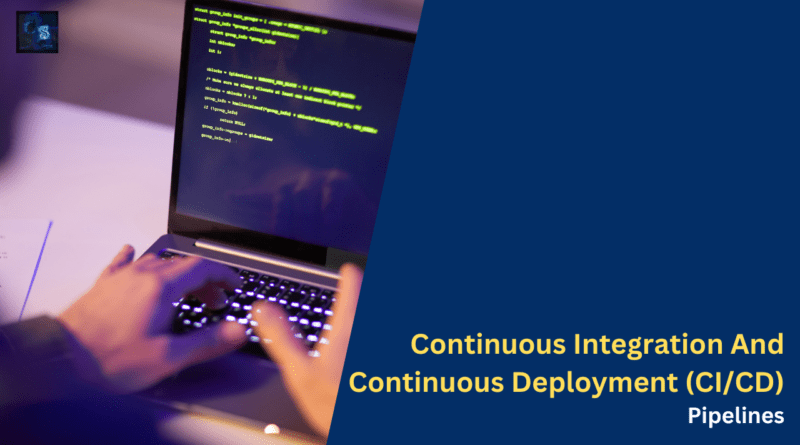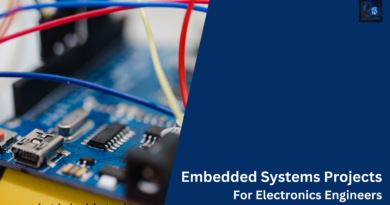Continuous Integration And Continuous Deployment (CI/CD) Pipelines
Hello, guys, welcome to our blog. Here in this article, we will discuss “Continuous Integration, Continuous Deployment and Pipelines of Continuous Integration and Continuous Deployment: Streamlining Software Delivery”.
Ask questions if you have any electrical, electronics, or computer science doubts. You can also catch me on Instagram – CS Electrical & Electronics.
Also, read:
- Top 10 High-Paying Electrical And Electronics Jobs In 2023, 2024
- Top 200+ MATLAB Simulink Interview Questions With Answers
- 100 (AI) Artificial Intelligence Applications In The Automotive Industry
Continuous Integration
Continuous Integration (CI) is a software development practice that has revolutionized the way teams build, test, and deliver software. It revolves around the idea of regularly integrating code changes from multiple contributors into a shared repository, followed by automated builds and tests. This proactive approach aims to detect and address integration issues early in the development process, fostering a more collaborative and efficient software development lifecycle.
One key principle of Continuous Integration is the frequent integration of code changes into a central version control system, such as Git. Developers submit their changes through version control, triggering an automated CI pipeline. This pipeline encompasses various stages, including code compilation, unit testing, and sometimes integration testing, all performed automatically.
Automated builds are a fundamental component of CI. With each code integration, an automated build process compiles the code, resolves dependencies, and generates executable artifacts. This ensures that the integrated changes can be successfully compiled and lays the foundation for subsequent testing stages.
Continuous Integration places significant emphasis on automated testing. Unit tests, integration tests, and even end-to-end tests are executed automatically as part of the CI pipeline. By automating these tests, teams gain rapid feedback on the impact of code changes, identifying defects early and preventing the introduction of bugs into the codebase.
The benefits of Continuous Integration extend beyond bug detection. It promotes collaboration among team members by providing a shared and consistent development environment. Developers can confidently integrate their changes, knowing that the CI system will quickly highlight any conflicts or issues.
CI plays a crucial role in supporting other modern software development practices like Continuous Delivery (CD) and Continuous Deployment. Continuous Delivery involves automatically deploying the application to a staging environment after successful integration and testing. Continuous Deployment takes this a step further, automatically deploying changes to the production environment.
Continuous Integration has become a cornerstone of modern software development methodologies. By automating the integration, build, and testing processes, CI enables teams to detect and address issues early, fostering a culture of collaboration, efficiency, and rapid delivery of high-quality software.
Continuous Deployment
Continuous Deployment (CD) is an advanced software development practice closely related to Continuous Integration (CI) and Continuous Delivery (CD). While CI focuses on regularly integrating code changes and automated testing, and CD extends this to automatically deploying changes to staging environments, Continuous Deployment takes the automation a step further by automatically deploying validated changes directly into the production environment. This approach aims to minimize manual intervention in the deployment process, facilitating faster and more frequent releases.
The key principle of Continuous Deployment is to automate the entire deployment pipeline, including the production release, after successful testing in earlier stages. This requires a high level of confidence in the automated testing suite to ensure that changes deployed to production are reliable and won’t negatively impact the user experience or introduce critical defects.
Continuous Deployment is built upon a foundation of CI practices. As developers regularly integrate their changes, automated tests are executed to validate the functionality and reliability of the application. If all tests pass successfully, the changes proceed through the deployment pipeline, automatically moving from development to testing, staging, and finally, production.
To implement Continuous Deployment successfully, it’s crucial to have a robust and comprehensive set of automated tests, including unit tests, integration tests, and end-to-end tests. Automated testing provides the necessary confidence to release changes continuously without manual intervention, ensuring that the software remains stable and reliable.
Continuous Deployment brings several advantages to software development teams. It enables faster time-to-market, allowing organizations to deliver new features and enhancements more rapidly. The automation of the deployment process reduces the likelihood of human error during releases, leading to more consistent and reliable software updates. Additionally, Continuous Deployment encourages a culture of continuous improvement, as teams must address issues promptly to maintain the automated deployment pipeline.
However, it’s important to note that Continuous Deployment might not be suitable for all types of applications or organizations. Industries with strict regulatory compliance or those dealing with critical systems may opt for more controlled release processes. In such cases, Continuous Deployment practices can be adjusted to meet specific compliance requirements.
Continuous Deployment represents the pinnacle of automation in the software delivery process. By automatically deploying changes to production after successful testing, organizations can achieve unparalleled efficiency, rapid delivery of features, and continuous improvement in the software development lifecycle.
Pipelines of Continuous Integration and Continuous Deployment: Streamlining Software Delivery
Continuous Integration (CI) and Continuous Deployment (CD) rely on automated pipelines to streamline the software development lifecycle, from code integration to deployment. These pipelines serve as a series of automated steps that facilitate efficient and reliable delivery of software changes. Let’s delve into the key components of CI/CD pipelines.
1. Source Code Management:
- Description: CI/CD pipelines begin with Source Code Management (SCM), where developers contribute code changes to a version control system (e.g., Git). SCM ensures version control and collaborative development, laying the foundation for automated integration.
2. Continuous Integration Pipeline:
- Description: The CI pipeline is triggered when developers push changes to the version control system. It involves a series of automated steps, including code compilation, unit testing, and other static code analysis. If any of these steps fail, the pipeline stops, and developers are notified to address issues.
3. Artifact Generation:
- Description: Successful CI pipelines generate artifacts, which are compiled and tested versions of the software. These artifacts, such as executable files or deployable packages, are crucial for subsequent stages in the CI/CD process.
4. Automated Testing:
- Description: Automated testing is a cornerstone of CI/CD pipelines. This stage includes unit tests, integration tests, and other forms of automated testing to ensure that code changes don’t introduce defects. If tests fail, the pipeline halts, allowing developers to address issues before proceeding.
5. Continuous Delivery Pipeline:
- Description: The Continuous Delivery pipeline extends the CI process by automatically deploying the tested artifacts to staging or pre-production environments. This stage involves additional testing, such as user acceptance testing, to validate that the changes work as expected in an environment that closely mirrors production.
6. Manual Approval (Optional):
- Description: In some cases, a manual approval step is included in the CD pipeline. This allows stakeholders to review changes in the staging environment before proceeding to production, ensuring alignment with business requirements.
7. Continuous Deployment Pipeline:
- Description: For organizations practicing Continuous Deployment, the pipeline extends from Continuous Delivery to automatically deploy changes to the production environment after successful testing in staging. This final step completes the end-to-end automation of software delivery.
8. Monitoring and Feedback:
- Description: Throughout the CI/CD process, monitoring tools track the performance and behavior of the application. If issues arise in production, feedback loops are established to alert development teams, enabling rapid response and continuous improvement.
9. Rollback Mechanism (Optional):
- Description: To handle unforeseen issues in production, some CI/CD pipelines include a rollback mechanism. If problems are detected post-deployment, the pipeline can automatically revert to the previous version, minimizing downtime and impact on users.
In conclusion, CI/CD pipelines are integral to achieving efficient and reliable software delivery. By automating code integration, testing, and deployment processes, organizations can realize faster time-to-market, reduced manual intervention, and a continuous improvement cycle that aligns with the principles of agile and DevOps methodologies.
This was about “Continuous Integration and Continuous Deployment (CI/CD) Pipelines “. I hope this article may help you all a lot. Thank you for reading.
Also, read:
- 10 Tips To Maintain Battery For Long Life, Battery Maintainance
- Top 200+ MATLAB Simulink Interview Questions With Answers
- 100 (AI) Artificial Intelligence Applications In The Automotive Industry
- 10 Tips To Save Electricity Bills, Save Money By Saving Electricity
- 100 (AI) Artificial Intelligence Applications In The Automotive Industry
- 100 + Electrical Engineering Projects For Students, Engineers
- 100+ C Programming Projects With Source Code, Coding Projects Ideas
Author Profile
- Content Writer








